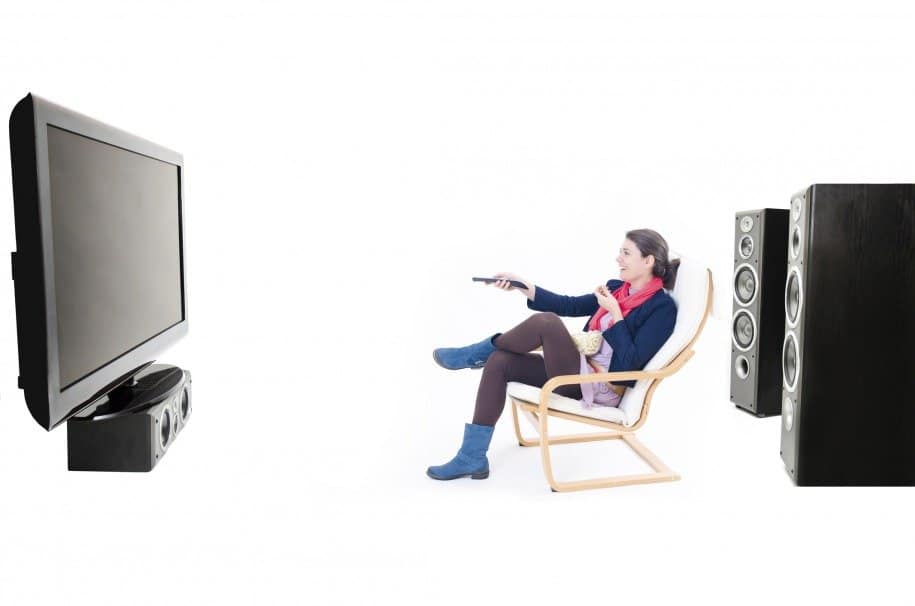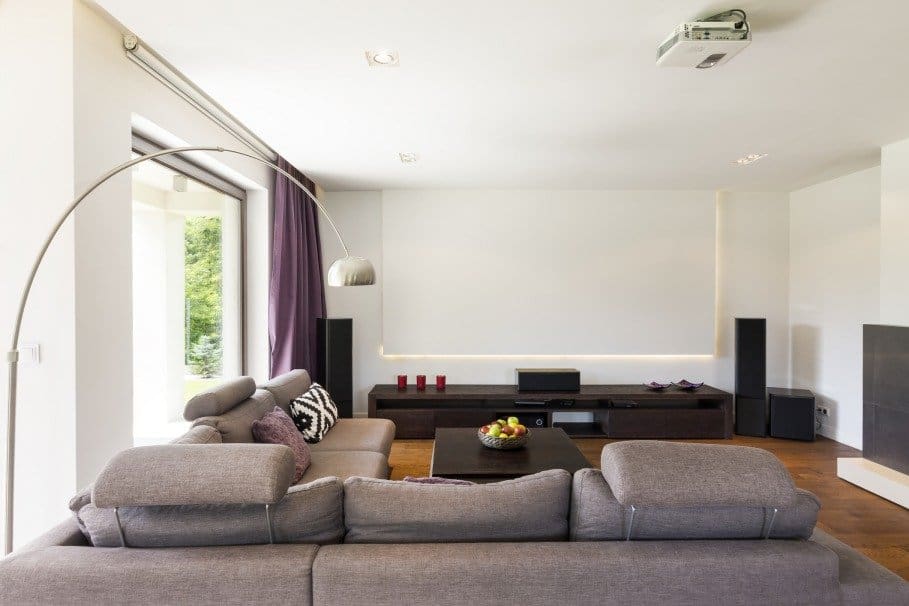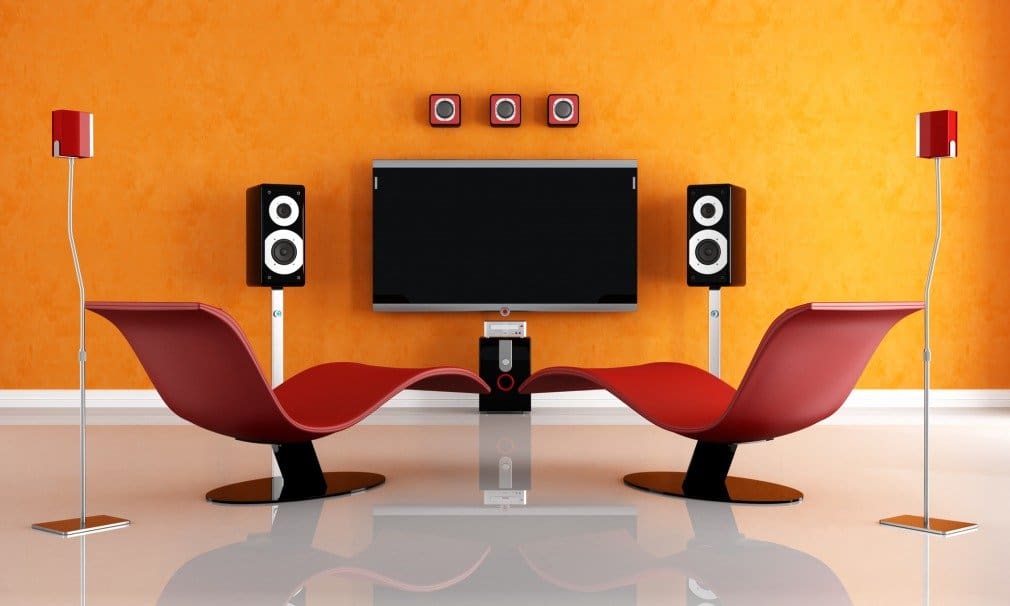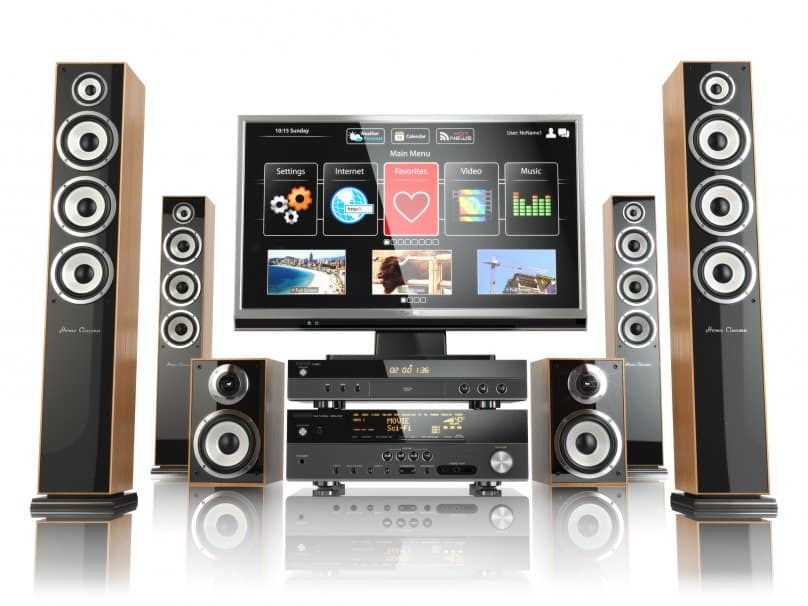5.1 vs 2.1 vs 7.1 Surround - What’s the Difference....
Have you ever wanted to boost your movie experience by buying a surround sound system? If you have, then now is your chance to do a little research on the surround that you should buy. You’d be amazed at how many types and variations there are.
What is a Surround Sound System?
A surround sound system is simply a type of audio output that is meant to “surround” the listener; hence the name. Surround systems have a number of speakers strategically placed around the room to give you high-quality and accurate audio. So far, there are three surround sound systems available in the market - the 2.1, 5.1, and the 7.1.
If you have noticed, these systems come in a set of numbers. The first number refers to the number of main speakers, while the second number after the decimal point denotes the number of subwoofers. A subwoofer is often added to the package because it captures low-pitched audio frequencies.
The 2.1 Surround Sound
First, and the oldest of the three, is the 2.1 surround. The 2.1 surround is composed of two speakers and one subwoofer. The two speakers are often placed right beside the television. Some models have tall speakers that you can place on the floor, while some can be mounted right beside the TV. Other systems come with speaker stands.

Even if the 2.1 surround does not exactly surround the listener, its simple appeal is what makes it interesting for a lot of consumers. Since you only have two speakers, the clutter that wires can make is reduced. In fact, you won’t even have trouble with the wires because they will just be near the TV, which is mostly a no-walking zone.
With just two speakers, you can also save a lot on both price and space. Depending on the brand of 2.1 surround speakers you buy, you can have a surround system for as low as $40. That’s a lot of savings that you can place on your television set instead. Moreover, it doesn’t take up a lot of space, so you have more room for plush sofas and pillows in your theatre room.
The 2.1 surround system sounds like it’s about to be phased out, but with the appeal it has on people who want a simple upgrade to their audio, it’s not going to be obsolete for a while.
The 5.1 Surround Sound
Next up is the 5.1 surround sound. Unlike its predecessor, the 5.1 system has five speakers that are designed to literally surround the listener. You have two speakers in the front, right beside the television, while you have two at the back. For the subwoofer, you can place it anywhere in between the four speakers, or anywhere in the room where it gives the best audio output.

What makes the 5.1 different from the 2.1 other than the number of speakers? Essentially, the number of speakers makes a huge difference in the quality of sound. The centre speaker is meant for the vocals and dialogues while the two speakers beside the TV are for the other audio in the video. The rear speakers play special effects and sounds. Since you have speakers at the rear of the room, you are able to fully experience theatre-like audio. It can easily give a movie-like experience to small and medium-sized rooms.
A 5.1 surround sound system is ideal if you want to have an authentic surround sound in your room. It supports Dolby Digital and DTS formats, so most media will be playable. If you love playing video games, then you would be able to maximize the surround sound even more.
Did you know? The 5.1 surround sound was created by Dolby Labs back in 1976. It was first used in the showing of Batman Returns.
The 7.1 Surround Sound
And then you have the 7.1 surround sound. Following the sequence, the 7.1 surround has 7 speakers and a subwoofer. It is a lot more complex than the 5.1 surround because of the number of speakers. There will definitely be more wires to run across the room and more space taken up by your surround sound system.
Despite the space and complexity of the 7.1 surround, it is one of the most advanced sound systems in the market. It has the same audio assignments as with the 5.1, but it has two additional speakers on the right and left side of the listener. In short, you have three speakers each on the left and right sides.

For obvious reasons, the 7.1 surround sound system gives a more immersive experience to your videos. It adds more depth and precision, making it the best one to use if you want a real movie-like experience. However, 7.1 is not the most ideal if you have a small room. With the number of speakers, the set has, it is wiser to place it in a much larger room.
One major downside to the 7.1 surround is the formats it supports. Unlike the 5.1, some videos and DVDs do not support 7.1, so it can be an added inconvenience to only looking for media that will support your sound system. Nonetheless, audio files have a higher chance of being compatible with the 7.1 system. The only disadvantage here is that the sound will function as a 5.1 or 2.1 surround.
Factors to Consider in Buying a Surround Sound System
So you know the differences between the 2.1, 5.1, and the 7.1, but what should you buy among the three? You know which one is ideal for large or small rooms, but are there any other factors to consider? Here’s the top four things you should take into account when you are about to buy a new surround sound system.

1. The size of the room
The first thing that you really have to consider is the size of the room. As mentioned earlier, it’s no use to buy a 7.1 surround sound system, if you’re only placing it in a small room. The sound will be too much for you to even notice how good the sound quality is.
And it’s not just that. You also have to look at the size of the speakers and if they will fit proportionally to your room. If the speakers are too big to mount, then you will most likely have to place them on the floor. If you have all 6 speakers on the floor plus the subwoofer, will you still have enough floor space? Ideally, you should already have the size of your room in mind when you look for sound systems.
2. The convenience
While the 7.1 surround sound system is often the best pick available, it’s not always convenient to have 6 speakers on the floor or on the wall with all the wires scattered. Fortunately, there are already hooks to keep your wires in place, so this problem can be easily solved. However, you might want to consider the ease of setting all the components up. Naturally, fewer speakers mean an easier job for you to set up, and this is almost always the case. If you’re not an expert in setting up appliances, a technician might be helpful here.
3. The TV
Another thing to consider is the TV. If you haven’t gotten a TV that would fit or match your home theatre, then now is the best time to look for one. If you are planning to buy a 5.1 or a 7.1 surround sound system, it might be wise to buy a smart TV that has a number of different audio connections. In fact, you can easily set things up if you can connect the speakers by just using the Wi-Fi or the Bluetooth connection.

If you want to do away with the separate installation, you can just buy a complete home theatre where the TV and the speakers are included. With this set, all the parts are there, and you just need to connect them. You’re essentially eliminating the complications of setting up. Of course, the downside here is that you can’t pick the best separate parts that would meet your preferences.
4. The budget
Although surround systems vary in price, it’s still important to look at your budget. You should know that a more advanced surround system is not always equal to a more expensive set. In fact, there are other 5.1 surround systems that are as expensive (or even more) than a 7.1 set. Of course, if money isn’t an issue, this is not something you’d think twice about. Still it’s wise to always check if a 7.1 or a 5.1 is ideal regardless of the price.
So there you have it. These three surround systems are often the most common systems you would see displayed in appliance stores. Most likely you’ll end up choosing between the 5.1 or the 7.1, but if you want a small system for the kid’s room, then you can get the 2.1.


